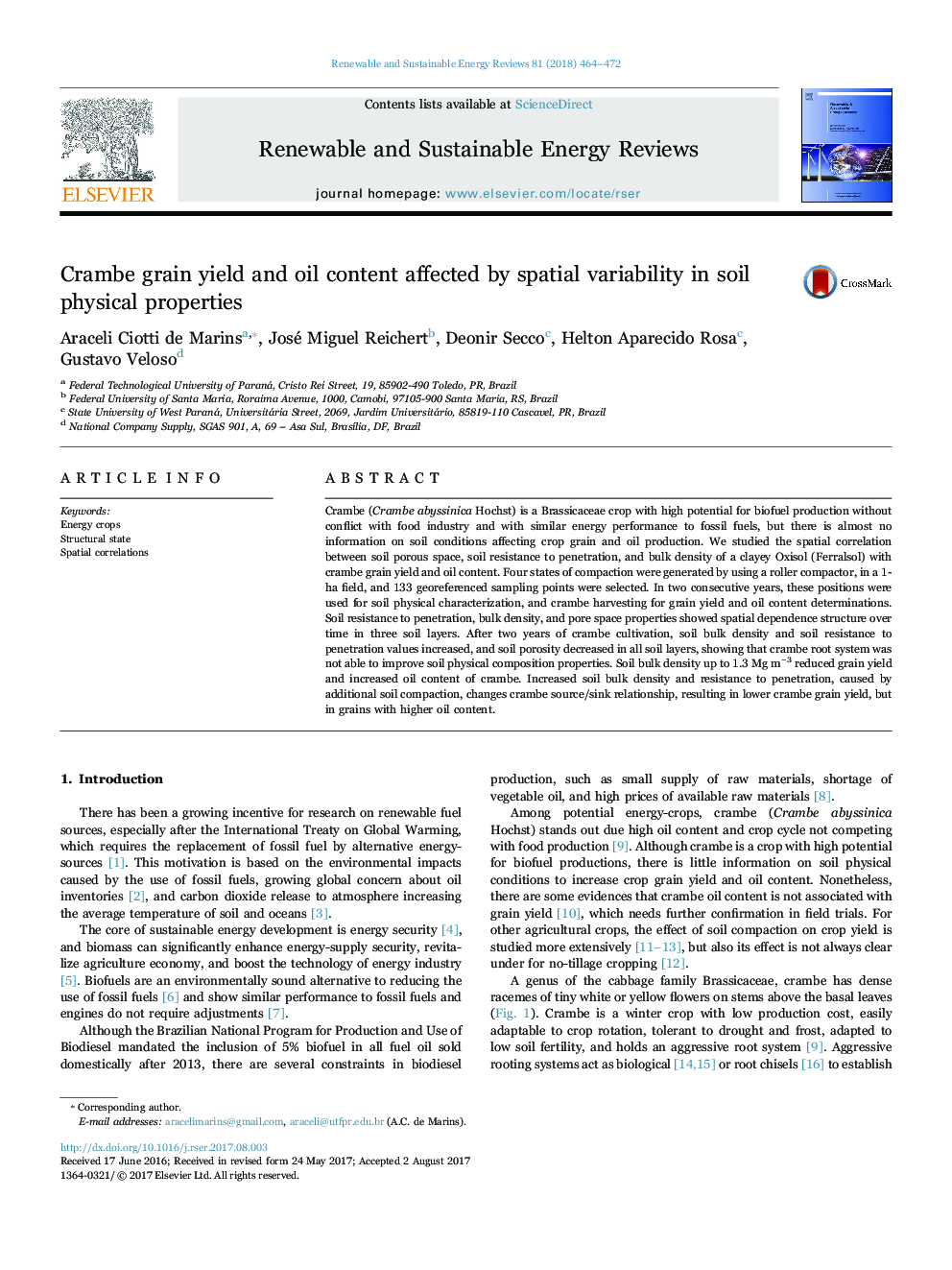| Article ID | Journal | Published Year | Pages | File Type |
|---|---|---|---|---|
| 5481973 | Renewable and Sustainable Energy Reviews | 2018 | 9 Pages |
Abstract
Crambe (Crambe abyssinica Hochst) is a Brassicaceae crop with high potential for biofuel production without conflict with food industry and with similar energy performance to fossil fuels, but there is almost no information on soil conditions affecting crop grain and oil production. We studied the spatial correlation between soil porous space, soil resistance to penetration, and bulk density of a clayey Oxisol (Ferralsol) with crambe grain yield and oil content. Four states of compaction were generated by using a roller compactor, in a 1-ha field, and 133 georeferenced sampling points were selected. In two consecutive years, these positions were used for soil physical characterization, and crambe harvesting for grain yield and oil content determinations. Soil resistance to penetration, bulk density, and pore space properties showed spatial dependence structure over time in three soil layers. After two years of crambe cultivation, soil bulk density and soil resistance to penetration values increased, and soil porosity decreased in all soil layers, showing that crambe root system was not able to improve soil physical composition properties. Soil bulk density up to 1.3 Mg mâ3 reduced grain yield and increased oil content of crambe. Increased soil bulk density and resistance to penetration, caused by additional soil compaction, changes crambe source/sink relationship, resulting in lower crambe grain yield, but in grains with higher oil content.
Keywords
Related Topics
Physical Sciences and Engineering
Energy
Renewable Energy, Sustainability and the Environment
Authors
Araceli Ciotti de Marins, José Miguel Reichert, Deonir Secco, Helton Aparecido Rosa, Gustavo Veloso,
